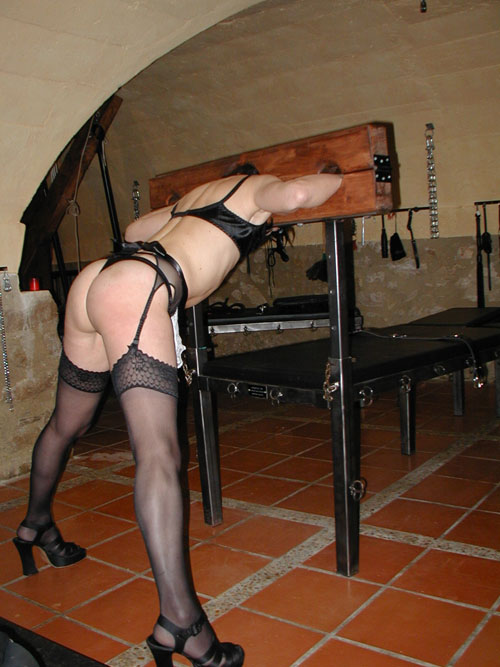Pillory

(→External link) |
|||
| Line 1: | Line 1: | ||
[[Image:Pillory.jpg|left]] A '''pillory''' ('''pranger''' in German) is a [[punishment]] device to hold a prisoner in a fixed place by the neck and [[wrist]]s. | [[Image:Pillory.jpg|left]] A '''pillory''' ('''pranger''' in German) is a [[punishment]] device to hold a prisoner in a fixed place by the neck and [[wrist]]s. | ||
| − | It has a | + | It has a horizontal board mounted several feet off the ground on a wooden post or frame (the name comes from the Latin for pillar). The board is in two parts, with holes through which the victim's head and hands are placed, then the two parts of the board are closed, clamping the person in, without direct pressure on the body parts. Instead of a board, hinged iron rings can also be used. |
A prisoner in the pillory is more exposed than someone in the [[stocks]], which hold a person by similar means. With hands trapped, they are unable to protect themselves or to move out of the way of any [[flagellation]]. | A prisoner in the pillory is more exposed than someone in the [[stocks]], which hold a person by similar means. With hands trapped, they are unable to protect themselves or to move out of the way of any [[flagellation]]. | ||
Revision as of 18:07, 8 January 2006
A pillory (pranger in German) is a punishment device to hold a prisoner in a fixed place by the neck and wrists.It has a horizontal board mounted several feet off the ground on a wooden post or frame (the name comes from the Latin for pillar). The board is in two parts, with holes through which the victim's head and hands are placed, then the two parts of the board are closed, clamping the person in, without direct pressure on the body parts. Instead of a board, hinged iron rings can also be used.
A prisoner in the pillory is more exposed than someone in the stocks, which hold a person by similar means. With hands trapped, they are unable to protect themselves or to move out of the way of any flagellation.
In the USA, the pillory remained a legal punishment until 1839 but the last recorded instance of the stocks being used in Britain for legal punishment was in Newbury, England in 1872.
Even with an adjustable-height pillory, two hours is quite a long time.
Variations
A variation on the pillory made common in Spain has the boards horizontal. The prisoner's head and hands are therefore upright. This exposes the breasts more and tends to be far less comfortable unless the height is adjustable to suit the person's height. An interesting variation of this is the table pillory - see Pillory dinette
A very small version of the pillory is the finger pillory. Once common for domestic punishment, they hold the fingers at the second joint.
